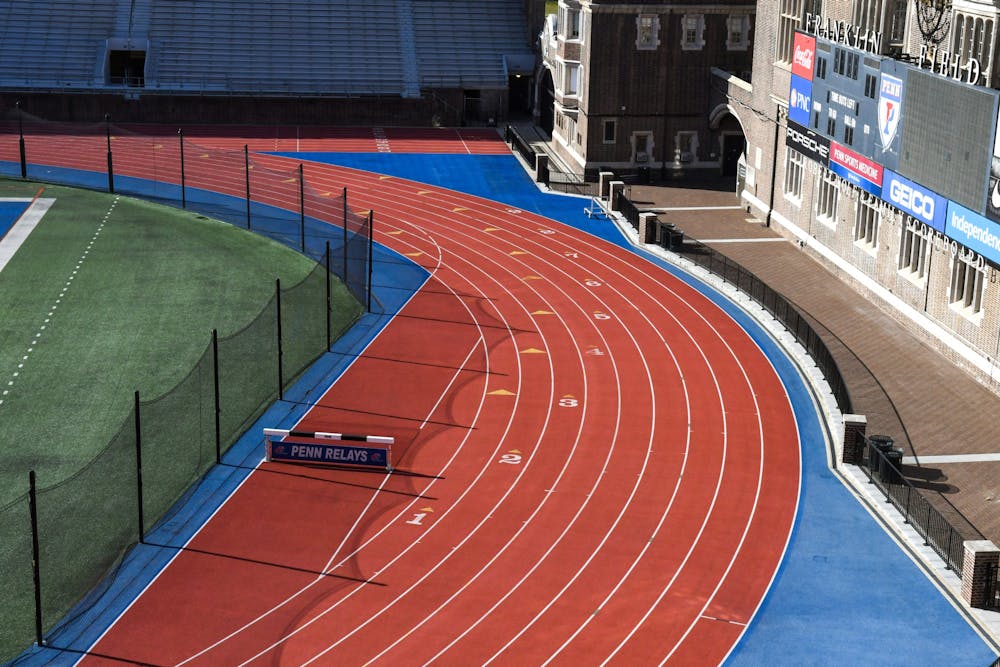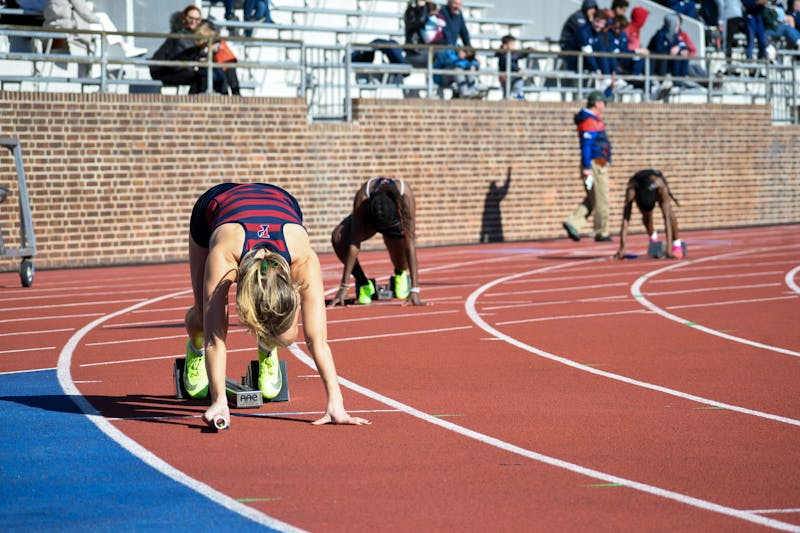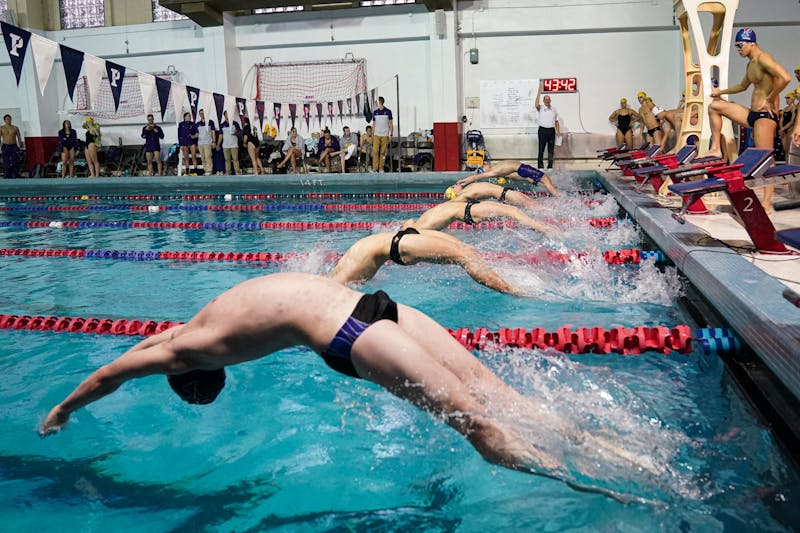
In its 125-year history, Franklin Field — the oldest two-tiered college football stadium in the United States — has undergone several changes. Among these, perhaps the most significant yet least known, is the modification of the Penn Relays track.
In 1951, the University decided to expand/widen the track from six to nine lanes — one more lane than a standard track. The idea was spearheaded by John Kenneth Doherty, the director of Penn Relays at the time. His motive behind widening the track was to increase the number of participants in the Penn Relays in the hopes that this increase would also bring more attention to the event.
Typically, lanes are added around the outside of a track. However, the Penn Relays track couldn’t expand outwards because it was adjacent to a brick wall, forcing the University to build new lanes on the inside of the track. This inward expansion caused the inner four lanes to be less than 400 meters, the fifth lane to be exactly 400 meters, and the outer four lanes to be more than 400 meters. A metal rail was installed between lanes four and five to mark where a “standard track” would begin.
In the summer of 2015, Penn decided to reconstruct the track, tearing it down from the ground up. While rebuilding, it was determined that another lane could be added within the “standard track,” which consisted of the lanes that were separated from the first four lanes by a metal rail. Because of the addition of a new lane, the metal rail was repositioned between lanes three and four.
This is the track that Penn still uses today; the first three lanes are less than 400 meters, the fourth lane is exactly 400 meters, and the last four lanes are more than 400 meters.
Specifically for events like the 4x400-meter relay, the configuration of the Penn Relays track poses problems for runners. A 4x400 follows a three-turn stagger, which means that it is mandated for the first leg to be run in staggered lanes. Runners can only begin cutting to the inside lane on the second leg. On a traditional track, runners gravitate towards the first lane — which is exactly 400 meters — to minimize the amount of distance that they have to run.
However, at Franklin Field, athletes are forced to run towards the fourth lane — the true 400-meter lane on the Penn Relays track. Instead of all runners attempting to run towards the most-inner lane, athletes in the inner three lanes have to run outwards towards the fourth lane, while athletes in the outer five lanes have to move inwards towards the fourth lane.
Because of this configuration, the metal rail between the third and fourth lanes creates issues for runners. It protrudes a couple of inches above the ground, often causing athletes to trip in races. The crowdedness of the track during the 4x400 further exacerbates this problem, with runners occasionally smacking into each other when trying to reach the fourth lane.
While the expansion of the Penn Relays track has created difficulties for some athletes, Doherty’s vision of popularizing the Penn Relays has certainly been accomplished. Over 100,000 viewers have tuned in each year since 2006, and the Relays has hosted more runners than any other meet in the world. The track will only continue to serve as a symbol of Penn’s history for years to come, bringing in participants and viewers from all across the country.
The Daily Pennsylvanian is an independent, student-run newspaper. Please consider making a donation to support the coverage that shapes the University. Your generosity ensures a future of strong journalism at Penn.
Donate








